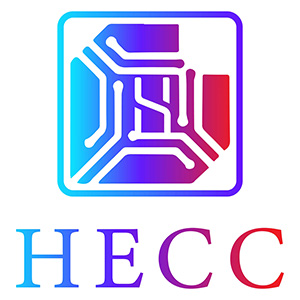In the increasingly prosperous era of the Internet of Things, countless devices are interconnected, achieving unprecedented automation and data exchange. However, it is in this vast interconnected network that sensors, as front-end data collectors, face severe challenges. Weak signals, complex environmental interference, and diverse performance requirements from different application scenarios all make traditional sensing technologies difficult to meet the needs of modern IoT. Meanwhile, embedded systems (such as MCUs), as the core drivers of numerous devices, also face strict standards in terms of size, cost, and power consumption.
At this moment, a new technology - programmable design technology - has become a powerful backing for smart sensing and embedded systems. Through the flexible programming features of this technology, we can not only enhance and adjust the signal processing of sensors, but also ensure stable and efficient operation of devices in various environments, and help embedded systems achieve a good balance between functionality, power consumption, and cost.
The "Volume Knob" of Sensors: Revealing the Magic of Programmable Gain Amplifiers
In our daily lives and industrial fields, sensors play a crucial role, monitoring environmental changes, mechanical movements, and even biological signals like loyal guards. However, the signals generated by these sensors are often weak and susceptible to interference, which is why we need a special kind of "electronic magic" - programmable gain amplifiers (PGA) and programmable gain instrument amplifiers (PGIA), which can enhance these signals and protect them from interference.
If we compare the sensor to a radio that can freely adjust its volume, then PGA and PGIA are like volume knobs that can amplify (or decrease) the sensor signal, so that our devices (such as medical devices, smartphones, or car sensors) can better understand these signals. The greatest value of this amplifier is that it can be programmed to control the gain, which means they can automatically adjust to meet the needs of different situations.
Why are they so special?
Accuracy: By using PGA or PGIA, we can precisely control the degree of signal amplification, which is crucial for applications that require high precision, such as medical diagnosis or precision measurement.
Flexibility: Because they are programmable, they can be easily adjusted to meet different needs and conditions without the need for hardware replacement or complex manual adjustments.
Integration: These amplifiers are typically integrated on a single chip, saving valuable space while also improving performance and reliability.
Tuner Master: How to optimize the performance of PGA/PGIA
Of course, designers need to consider several key factors when choosing or using PGA/PGIA: First, response time: This is the time it takes for the amplifier to "stabilize" the signal after changing its gain setting, which is particularly important for rapidly changing signals or high-speed scanning systems. 2、 Accuracy and stability: The design of these amplifiers must ensure accurate and stable performance throughout the entire operating temperature range. 3、 Interference and error: Designers need to pay attention to any additional factors that may affect performance, such as small capacitors and resistors in the circuit.
As for these issues, integrated single-chip amplifier solutions such as Microchip MCP6G01 SGA or Renesas ISL28533 can greatly alleviate these design challenges while improving performance by ensuring a tight match between component tolerances and temperature dependencies. They also simplify the control of the host system through gain selection logic and reduce material lists and PCB space, providing simplification for design and layout challenges. In addition, other performance indicators such as gain propagation delay and power consumption must also be considered. If a suitable single-chip device cannot be found, it is meaningful to use specially selected analog components to build amplifiers in this situation.
Programmable Simulation Technology: Redefining the Future of Embedded Systems
In addition to sensors, almost every device we use in our daily lives, from smartphones to industrial automation systems, is controlled by embedded systems. Embedded systems are the core of modern electronic devices, responsible for processing and responding to complex data logins.
Embedded systems typically require connections between the analog and digital worlds. To achieve this interface, a simulated front-end (AFE) is required. The traditional method mainly uses various discrete analog components and ICs, such as operational amplifiers and data converters, to build circuits, but this method faces limitations in space, cost, and power consumption. With the advancement of technology, integrated analog microcontrollers (MCUs) provide a more efficient solution, but they still have limitations in terms of functionality and flexibility.
In the face of increasing demand and design complexity, programmable simulation integrated circuits (ICs) have emerged. Programmable simulation provides the most complete variety of analog peripherals and has integrated simulation MCUs, allowing engineers to customize a series of simulation functions on a single chip, achieving a good balance of functions and easy development.
However, designing a programmable analog integrated circuit is a complex task. These integrated circuits need to provide all the required analog signal chain functions, which vary greatly from sensor interfaces to data conversion. Compared to MCU with limited integration of analog peripherals, programmable analog devices must support multiple input and output channels and require different design skills for configuration.
Infineon's PSoC ™ The series is a pioneer in this technology, combining microcontrollers and programmable analog and digital modules, providing designers with unprecedented flexibility. This is of great significance to the engineering community, as it not only reduces the cost and complexity of Bill of Materials (BOM), but also reduces the size of circuit boards, while providing the ability to reconfigure in real-time, which is not possible in traditional integrated simulation MCUs.
So, how does Infineon's programmable simulator work specifically? PSoC ™ The underlying architecture behind the device is the switch capacitor simulation module. By precisely controlling the charging and discharging of capacitors, these devices can simulate the behavior of traditional resistors, amplifiers, and other analog components. The advantage of this technology is that it allows for precise control of the behavior of analog circuits at the microscopic scale, while occupying less physical space.
In addition to Infineon, Renesas has also launched its own solution. Its GreenPAK programmable mixed signal devices also use switch capacitor technology. However, unlike Infineon's solution, Reza's GreenPAK series provides an alternative solution without an MCU, but allows engineers to integrate various analog and digital functions without the processing power of microcontrollers. Renesas GreenPAK solution also effectively reduces BOM costs and component quantities, while minimizing circuit board space.
Overall, both Infineon and Renesas offer programmable simulation solutions, but they differ in implementation and usage. Infineon's PSoC ™ More inclined towards applications that require highly integrated MCU, GreenPAK provides a wider range of mixed signal support functions, but does not have an MCU core.
summary
Overall, whether it is programmable gain amplifiers (PGAs) or programmable ICs, these programmable design technologies are playing an increasingly important role in today's digital age with many advantages. I believe that with the continuous advancement of these programmable design technologies, we can foresee that massive amounts of data will be better utilized by us, able to meet the growing needs of various industries.

 Aaron
Aaron 